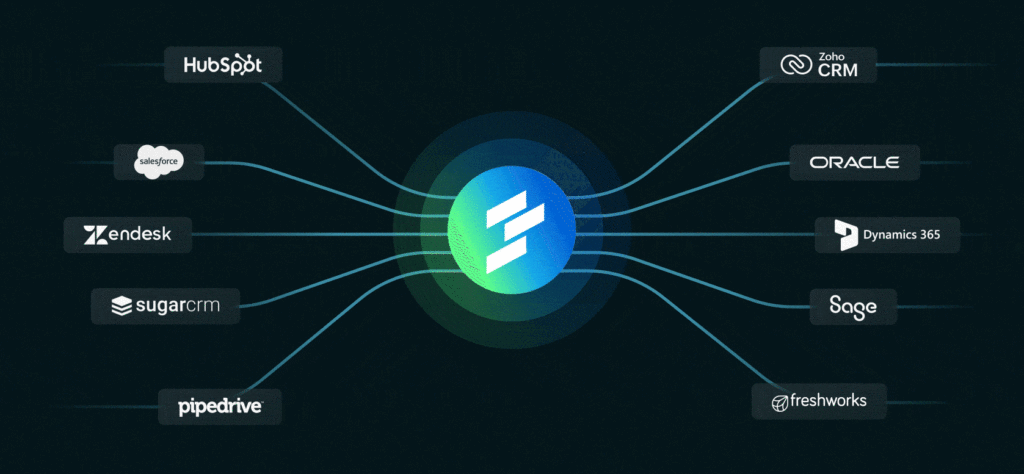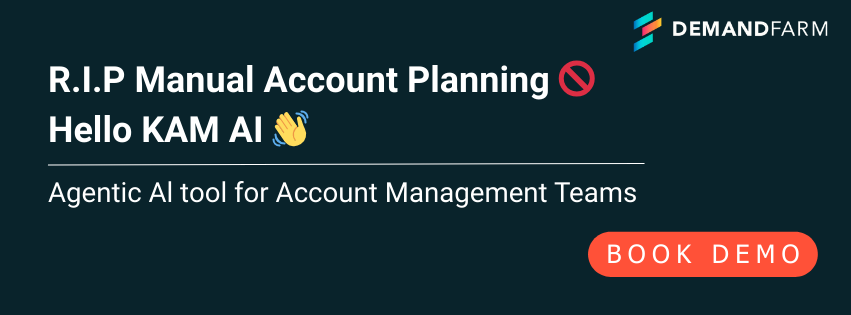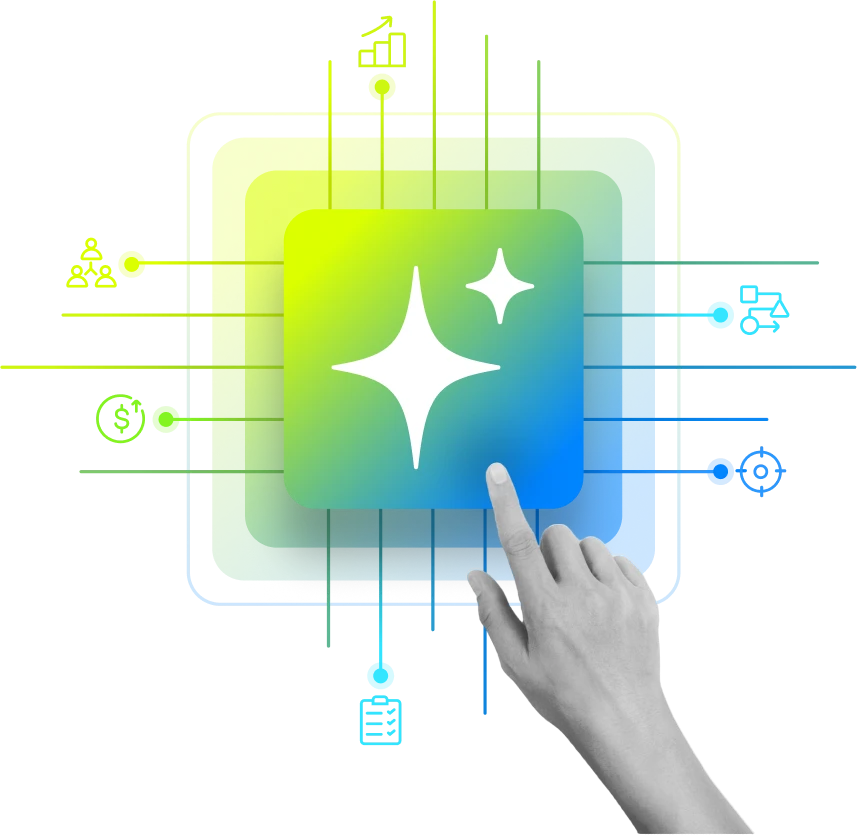AI has swept across the enterprise. From marketing automation to customer support, from predictive lead scoring to content generation—every function is being reimagined by intelligent systems. The logic is simple: train the models, refine the data, automate the process, and scale.
But this linear formula doesn’t quite hold in key account management (KAM). AI’s promises feel premature, disconnected, and sometimes out of context in KAM.
And that’s not because KAM is behind the curve. It’s because KAM is still driven by human complexity that AI cannot replicate—at least not yet.
Strategic account growth depends on trust built over years, understanding of internal power structures, shared institutional history, and relationship intelligence that often isn’t written down. In most organizations, the real insights live in human minds, whiteboard scribbles, Slack threads, and exit interviews—not structured CRM fields. Which means that AI, no matter how powerful, has almost nothing to learn from.
The Hidden Cost of Being “Too Human”
Veteran account managers navigate complex buying committees, shifting priorities, and nuanced organizational cultures by relying on instinct. These instincts are priceless but also inherently unscalable. What one senior manager knows after ten years in a single account rarely makes its way into the hands of the broader team. There is no institutional memory, no pattern recognition, no data trail for AI to latch onto.
And so, while every other function in the enterprise gets a tech upgrade, KAM remains high-touch, manual, and dependent on the same people. It’s like asking AI to pilot a plane mid-storm without access to any flight data. The system might be intelligent, but it’s blind.
This is where the cost of being “too human” reveals itself. Decisions remain tribal. Knowledge stays local. Growth becomes fragile. And when those senior managers leave, they don’t just take their contacts—they take the map.
AI in Lead Gen vs. AI in KAM
Why AI succeeds in lead gen but might not be efficient in KAM. Here is why.
Lead generation is an AI playground. Public data abounds: job titles, firmographics, intent signals, content consumption patterns. You can model buyer journeys, automate email sequences, predict timing, and even write the perfect cold message. And if the AI gets it wrong? You lose a few leads. It’s a recoverable mistake.
But KAM operates in an entirely different paradigm. You’re not casting a wide net. You’re safeguarding multi-million-dollar relationships that took years to build. The risks aren’t just financial—they’re strategic. Losing one key account can mean stalled product adoption, delayed expansion, or reputational damage in the C-suite. You don’t just lose revenue. You lose momentum.
Which is why the AI models that power outbound engines fail in key account growth. The variables in KAM aren’t public. They’re personal. The real data isn’t found in firmographics—it’s found in relationship dynamics, unspoken goals, evolving priorities, and quiet power shifts. And without that intelligence, AI is just guessing.
KAM Skipped the Maturity Curve
Most tech categories follow a logical arc: first, systematize the process. Then, standardize it across the organization. Only then do you automate. CRM followed this path. So did marketing automation. Even customer success tools took a decade to reach maturity.
KAM, on the other hand, skipped steps. In the rush to modernize, teams jumped from post-it notes to predictive analytics—without ever building the structured systems in between. There’s an unspoken assumption that AI will figure it out. But AI is not magic. It can only learn from what exists. And if your goals, relationships, and conversations only live in PowerPoint decks or managers’ memories, there is nothing to train on.
This mismatch between ambition and foundation is why most “AI-powered” KAM tools feel underwhelming. They promise transformation, but deliver alerts no one trusts and suggestions no one uses.
Inside-Out Intelligence Is the Missing Layer
What KAM truly needs isn’t more automation. It needs intelligence—but not the kind you can scrape from LinkedIn or synthesize from press releases. KAM needs inside-out intelligence: signals captured within your business, from the conversations your teams have, the goals your clients set, the shifts in influence, and the history of engagements that unfold over time.
Think of it this way: most sales AI is a telescope—it looks outward. But KAM AI must be a microscope. It must examine what’s already happening inside your strategic accounts and make sense of it.
What are the patterns from past goal failures or successes? Which relationships are weakening? Which internal stakeholders are blocking expansion and why? Where does whitespace keep showing up but never convert?
These questions cannot be answered by public data. They require an internal data layer—structured, logged, and ready for intelligent systems to analyze. And that layer, for most teams, doesn’t exist yet.
The Paradox: Too Human, Not Enough Wisdom
Here lies the central contradiction. KAM is rich in wisdom—but poor in data. Every conversation, insight, and decision is drenched in context. But none of it is captured systematically. So when organizations look to AI for help, they’re essentially asking it to scale tribal knowledge without first documenting it.
This is why AI in KAM often feels tone-deaf. It delivers generic suggestions because it lacks access to account-specific history. It proposes playbooks without understanding the nuances of a particular buyer relationship. And it fails to anticipate risk—not because it’s unintelligent, but because it was never fed the right signals.
The problem isn’t AI. The problem is what we’ve failed to preserve and structure.
Why External Data Won’t Save You
It’s tempting to think that buying intent tools or hiring better enrichment platforms will bridge the gap. But external data has diminishing value as soon as an account becomes strategic. That’s when you need to know:
- Who truly influences decisions?
- Which relationships are active, dormant, or in decline?
- What motivates your champion’s internal narrative?
- Which internal shifts are impacting deal momentum?
These insights aren’t inferable from external feeds. They live in your meetings, emails, call notes, and rep memories. Which means you can’t outsource your way into account intelligence. You have to build it yourself.
Building the KAM AI Flywheel
If you want AI to help with key accounts, you need to do what humans usually resist: document the critical information. That means capturing relationship maps, tracking goal progress, logging organizational shifts, and annotating blockers and champions. This foundational data is your internal signal layer. It’s your private dataset. And once that’s in place, AI can finally stop guessing and start guiding.
With enough history—100+ goal logs, 10,000+ conversational signals, 300+ whitespace records—you can start modeling context-aware recommendations: which goals convert fastest, which relationships need attention, where expansion is most likely.
From there, you can automate low-stakes tasks, while amplifying high-stakes decisions. That’s the real role of AI in KAM—not to replace judgment, but to make it smarter, faster, and more scalable.
Intelligence First, Then Automation
AI in KAM only works when the right intelligence is in place. Until then, every AI output is a guess—and a wrong guess in KAM is costly.
AI doesn’t think until it remembers. And in KAM, forgetting is how you lose.
That’s why structured account planning, goal tracking, and conversation logging matter. They aren’t admin tasks. They’re the foundation for any meaningful AI insight.
And that’s why the ‘Why KAM Now’ movement is so timely. Companies that act today—by capturing internal intelligence systematically—are teaching their future AI what patterns to look for, what actions to recommend, and how to unlock real growth.
At DemandFarm, this flywheel is already turning. Our KAM AI capabilities are built on a structured foundation of account data, relationship intelligence, and goal-driven workflows. The results? Smart nudges. Relevant suggestions. And AI that actually understands your account strategy.
Because KAM isn’t anti-AI. It’s pro-intelligence.
And intelligence, like trust, has to be earned.
👉 See how KAM AI works at DemandFarm


